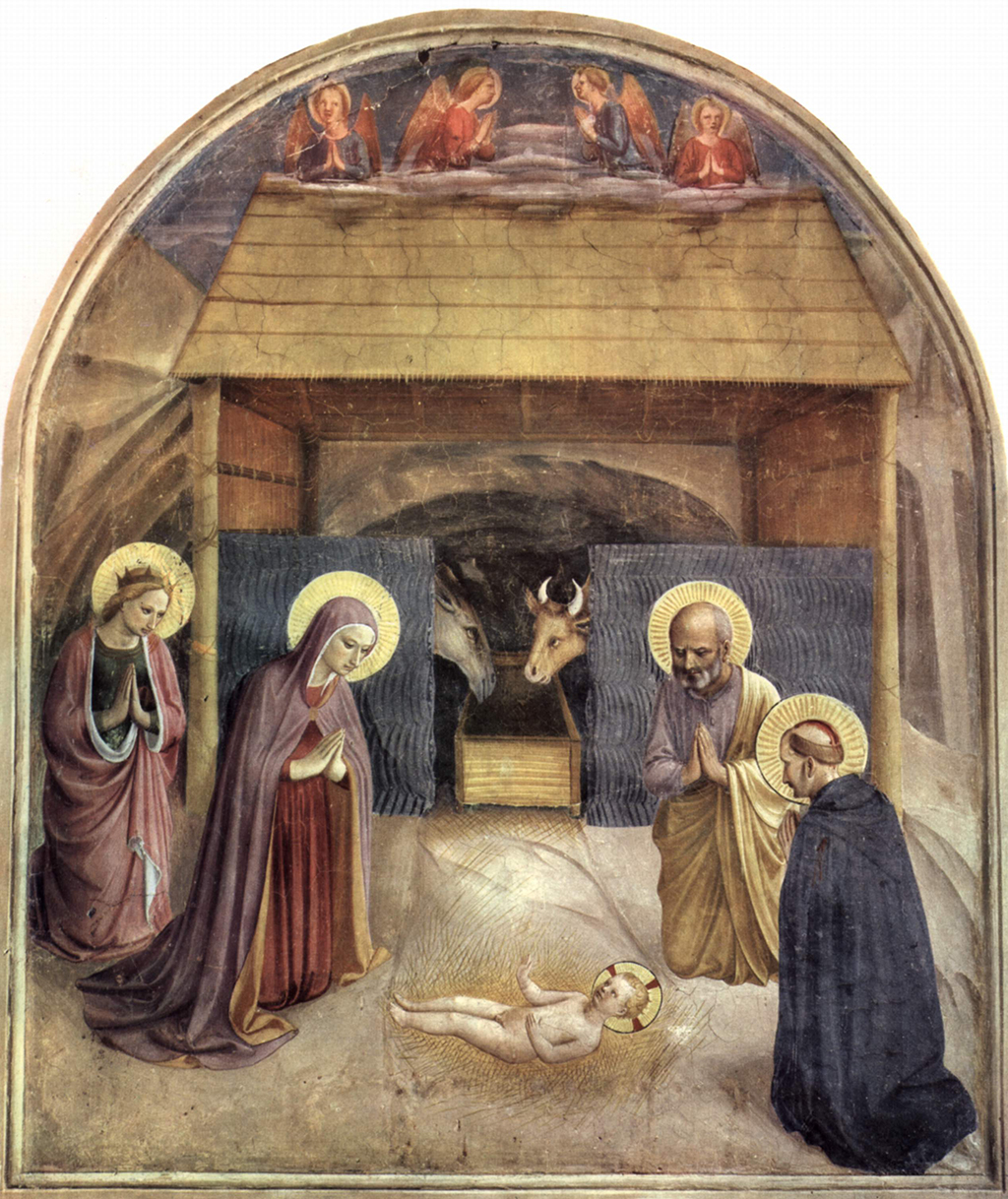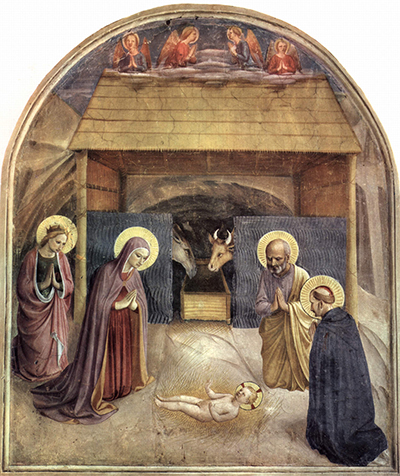Fra Angelico's work of the nativity is iconic and a subject of Christian narrative since the beginning of the 14th century. The artwork exhibits the holy child lying in a manger, surrounded by his parents and shepherds and animals. Wise men also stand aside adoring the little one.
The artwork is presented in its simplest form. The painting was produced in the 15th century and is of gothic style. The Nativity (1440) is a representation of the moment after Christ's birth. The infant is surrounded by Mary, Joseph and other religious figures; with their importance denoted by glowing halos. On the background are four angels, a cow, a donkey and guests. According to the bible, all these beings were present at the birth of baby Jesus. Irrespective of its simplistic representation, the artwork by Fra Angelico, bears all the elements of the Nativity narrative we all are familiar with. The Nativity (1440) is located in Basilica di San Marco and Florence Italy and bears the tags Christianity as well as holy-family and Christmas. The religious painting dates 1440-1441 and uses the early renaissance style.
Fra Angelico, an Italian painter who lived in the early renaissance period, used unadorned fresco technique in this artwork. He also used bright pastel colours and carefully arranged the critical features, thus making this painting adorable. Further, Fra Angelico uses mythological and allegorical scenes to decorate the arts. In this piece of artwork, large tondo is purposely used for religious significance. Fra Angelico, popularly known as the "Angelic Painter" ushered in a revolution in Italian painting. Inspired by artists such as Masaccio and Leon Battista Alberti, his emphasis on precision and rationality was reflected in his painting.
He inspired painters such as Massacio to base their artwork on religious subjects. It is also believed that Fra Angelico’s paintings greatly inspired Antoninus. Although Fra Angelico’s piety made him a legend, his creativity and artistic use of colour inspired many Renaissance artists among them, Raphael and Luca Signorelli. As a result, Raphael incorporated Angelico's portrait into his works; Sermon and Deeds of the Antichrist, and Disputation of the Holy Sacrament as symbols of devoutness.
The reputation of Angelico went forth to inspire northern renaissance artists such as Rogier Van der Weyden. In the 19th century, Angelico's work inspired the Pre-Raphaelites in England. Dante Gabriel Rossetti is another artist who draws much of his inspiration from Angelico's artwork. His works of the late medieval period greatly influenced other painters in the later renaissance era. His feelings for humanity and devotion to religion also inspired artists centuries later. To this day, Angelico's works continue to inspire generations of artists. Richard Hamilton, who is an artist, stated to be inspired by Angelico's painting. This is exhibited in his collage named The Annunciation (2005).





